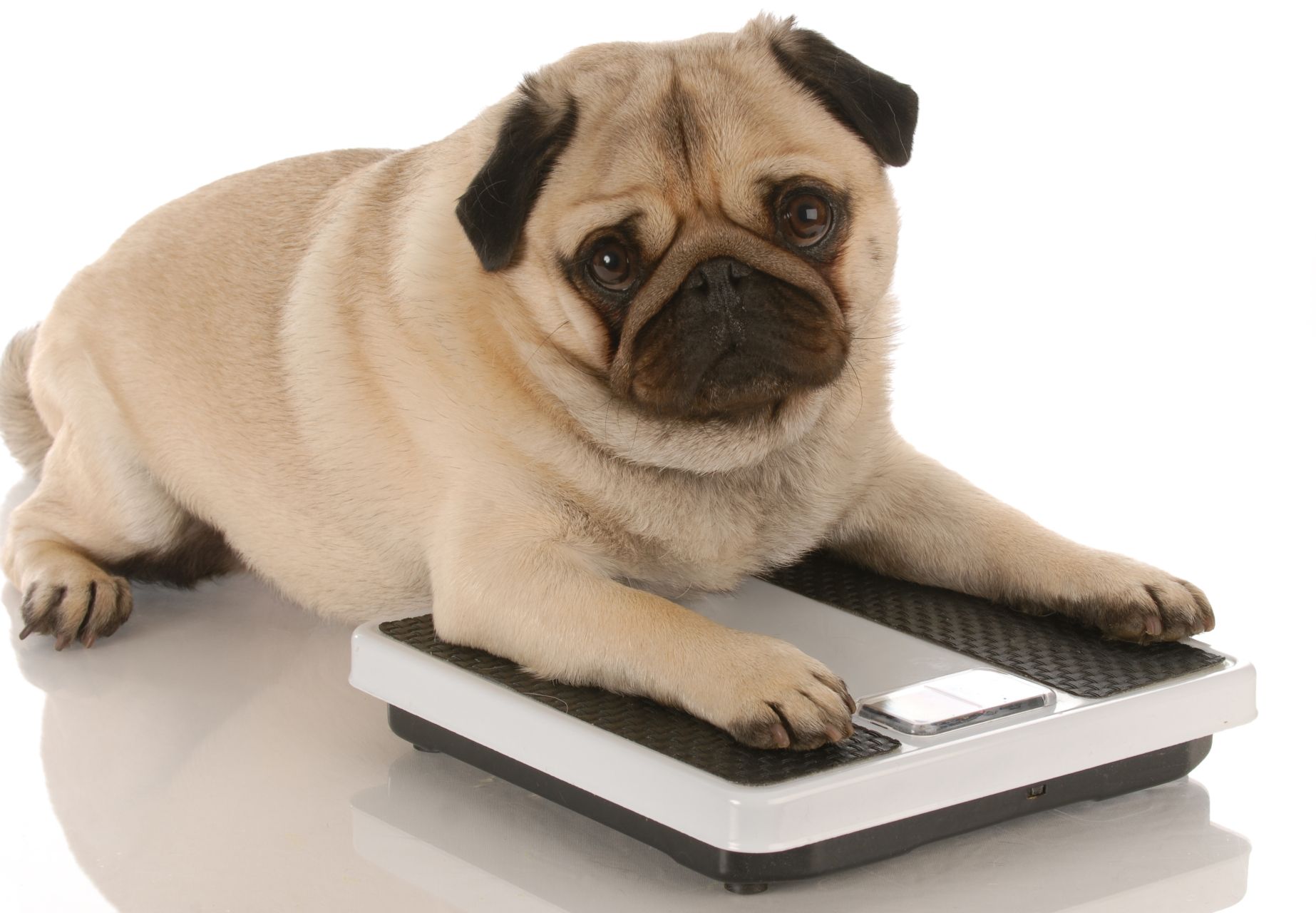Scale Shock: How to Manage Pet Obesity

Weight gain in pets can happen so slowly, it’s almost unnoticeable. For owners that see their pets every single day, it may not even register that their pet’s shape and size is expanding. A few extra pounds on a human may be negligible, but the equivalent of 5 extra pounds is 79 pounds on a cat, or 25-100 extra pounds on a dog (depending on their breed). This has a profound effect on their overall health, and may even decrease lifespan. We can help you prevent pet obesity, and/or safely manage a pet’s weight gain.
A Serious Issue
Pet obesity is characterized by too much body fat. Not only responsible for limiting comfort and mobility, excess weight gain can cause or exacerbate the following health problems:
- Diabetes
- High blood pressure
- Heart disease
- Respiratory issues
- Cancer
The cause of pet obesity is overfeeding, but there are certain factors that can increase a pet’s risk, such as:
- Breed
- Age
- Gender
- Neutered status
- Environment/Lifestyle
Playing Your Part
It is essential to properly measure your pet’s meal portions every day, and stick to them. Every little calorie adds up. If you notice that your pet begs you for more food, we can analyze and possibly adjust their portion sizes or meal times. However, we recommend only making changes to your pet’s diet slowly and under the direct care of your pet’s veterinarian.
Slowly but Surely
An important aspect of your pet’s annual or semi-annual wellness exam is getting them on the scale so we can check for changes in their weight. Seeing your pet once or twice a year can create more awareness regarding target weight. As they age, pets can develop painful osteoarthritis, and symptoms only worsen with any extra weight on their joints. Keeping track of any changes to their weight can help us create a weight loss plan.
Quickly restricting calories can cause its own set of problems that should be avoided. We can help you track your pet’s calories and make slight adjustments to them over a specific period of time.
Staying In Front of Pet Obesity
Every week or so, measure the outline of your pet’s ribs. If you can see and feel the ribs, hip bones, spine, and waist, they’re at an ideal weight. From the side, you should see that their belly is nicely tucked.
All pets benefit from daily exercise. If you aren’t able to play or walk with your pet for a minimum of 30 minutes a day, ask a friend, relative or neighbor to help out. Doggie daycares or dog walkers are also a great option to keep pets in shape.
If you have other questions about your pet’s nutritional needs, weight, or behavior, call us at (916) 939-1705. Our staff is always happy to help you at MarketPlace Veterinary Hospital.

